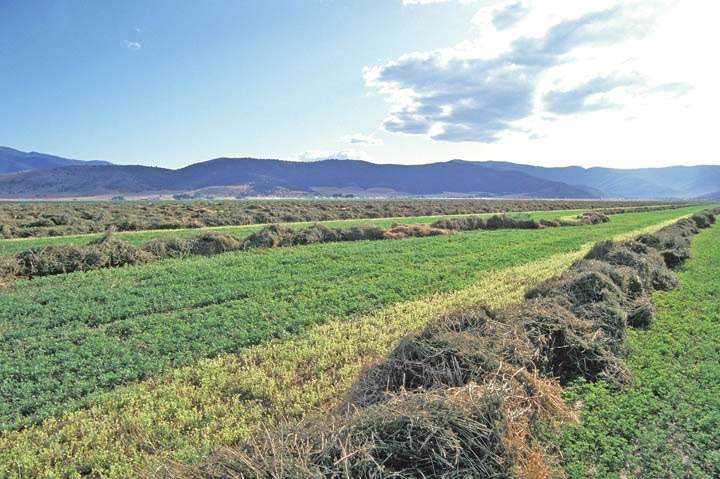
Unfortunately, readers of the Wall Street Journal are more likely than not to believe what they read in an op-ed on alfalfa and water use written by a University of Arizona professor and an environmental attorney. It’s a problem that has troubled alfalfa for many years and CAFA has responded to refute misinformation.
October 30, 2012

I’m sure it’s not surprising to hear that the attack on alfalfa’s water usage is gaining momentum once again. It’s something to be expected whenever rain and snowfall aren’t up to par. What’s surprising about an October op-ed piece about alfalfa, however is the publication, the Wall Street Journal, and two authors from Arizona — Robert Glennon, a University professor of law and public policy, and Peter Culp, an environmental attorney in Arizona. Their beef is that when shipments are made to China, large amounts of water “will leave the country embedded in alfalfa — most of it grown in California.”
Some of the statements made are strange, such as this sentence: “Even though a large segment of the population is lactose intolerant, Chinese consumers are responding with enthusiasm.” Unless it’s against the law to pass gas in China, why does lactose intolerance belong in the op-ed piece? I’m not exactly sure what their agenda is, but it looked as though they wanted to go all out to denigrate alfalfa.
Unfortunately, readers of the Wall Street Journal are more likely than not to believe what they read in an op-ed written by a University of Arizona professor and an environmental attorney. It’s a problem that has troubled alfalfa for many years and CAFA has responded to refute misinformation.
When I began working on this column I received Seth Hoyt’s weekly Hoyt Report and we had similar thoughts. According to the op-ed, this year’s “drought-stricken” Western states will “ship more than 50 billion gallons of water to China.” It went on to say, “The strange situation illustrates what is wrong about how we think, or rather don't think, about water policy in the U.S.” Their solution: “Instead of exporting alfalfa grown in the water-starved West, the U.S. could capture more of the economic benefit of the embedded water by feeding it to cows here, supporting the growth of the dairy and milk-processing industries.”
Like Hoyt, I wondered how they came up with 50 billion gallons of water going to China. Hoyt’s response: “Where did they get that number?” They also said we’d export enough water to China to “supply the annual needs of roughly 500,000 families.” Before CAFA responded, a letter to the Journal explained that when hay is sent, it only has about 15 percent moisture, so very little water is actually shipped overseas.
The statement in the op-ed piece that “alfalfa is a water-guzzling crop” shows that the authors didn’t do their research. If they had, they would know that alfalfa is a high yielding crop that’s highly efficient when it comes to water use. It’s interesting that alfalfa is the only commodity the authors jumped on, making it look as though it’s a leading export. As Hoyt points out, it’s estimated that only 6 percent of production from the 11 alfalfa-growing Western states will be for export this year.
It will be interesting to see how the authors respond to misinformation that needs to be corrected. If you’d like to read the entire op-ed the title is, “Parched in the West but Shipping Water to China, Bale by Bale.” It was in the Wall Street Journal opinion section in the Saturday/Sunday edition on Oct. 6-7. You can find it here.
You May Also Like



